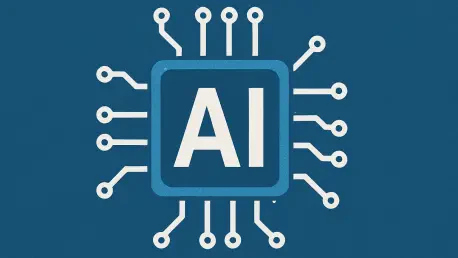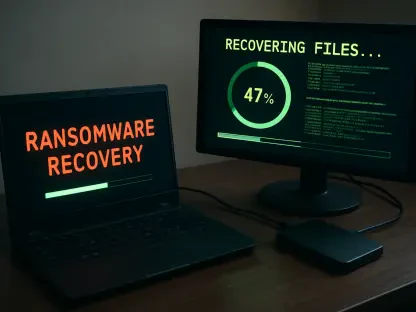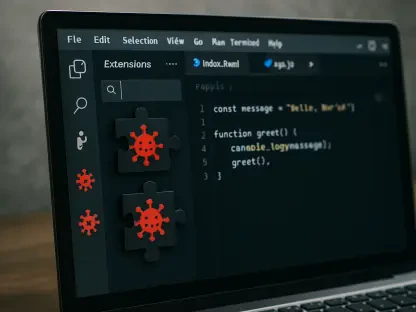In an era where artificial intelligence is transforming workplace dynamics, a staggering reality emerges: many AI tools, integral to business operations, often access sensitive systems with credentials embedded in plain text, leaving organizations vulnerable to breaches. As AI agents become indispensable for tasks involving databases, cloud services, and other critical infrastructure, the risk of unauthorized access and credential leakage looms large. Cybersecurity experts have long warned about the dangers of unsecured AI integrations, and the need for robust solutions has never been more urgent. Enter a pioneering response from a leading cybersecurity company with the introduction of a free, open-source tool designed to tackle these pressing challenges head-on. This innovative solution promises to redefine how AI credentials are managed, offering a secure framework that prioritizes safety without compromising productivity. By addressing a critical gap in AI security, this development marks a significant step forward for organizations navigating the complexities of digital transformation.
Addressing the AI Security Challenge
The Risks of Unsecured AI Access
As AI tools proliferate across industries, their integration into sensitive environments often comes with a hidden cost: the potential for catastrophic security breaches. Many organizations, in a rush to leverage AI for efficiency, embed credentials directly into prompts or configurations, exposing them to exploitation. Such practices create fertile ground for unauthorized access, where malicious actors can extract sensitive information with alarming ease. Beyond immediate threats, the lack of traceability in hardcoded credentials complicates auditing efforts, making it nearly impossible to monitor or revoke access when needed. This vulnerability not only jeopardizes organizational data but also undermines trust in AI-driven processes. The scale of the problem is evident as more businesses adopt AI without fully understanding the security implications, amplifying the urgency for a reliable safeguard that can protect systems while supporting innovation.
A New Approach to Credential Protection
Recognizing the critical need for secure AI integration, a groundbreaking solution has emerged in the form of the Model Context Protocol (MCP) Server. This open-source tool acts as a secure intermediary, ensuring that AI agents never directly access raw credentials stored in vaults. Instead, it exposes only predefined functions, allowing AI tools to request resources within strict boundaries. Built on principles of least-privilege access, the system employs identity verification, policy-based controls, and short-lived tokens to minimize risks. By preventing credential exposure, the MCP Server significantly reduces the attack surface, addressing a core vulnerability in AI deployments. Compatibility with industry standards like OAuth and connectors for popular platforms such as ChatGPT and Claude further enhances its utility, making it a versatile option for diverse environments. This approach reflects a shift toward proactive security, balancing the dual demands of functionality and protection in modern workplaces.
Implementing a Secure AI Framework
Navigating Integration Challenges
While the MCP Server offers a promising avenue for securing AI credentials, its adoption is not without hurdles, particularly for organizations with intricate or legacy systems. Integrating this solution demands meticulous planning to align AI workflows with new security protocols, ensuring that no gaps are left for exploitation. The process can be time-intensive, requiring configuration adjustments and testing to guarantee seamless operation. For businesses unaccustomed to such frameworks, the initial effort might seem daunting, potentially deterring immediate uptake. However, comprehensive resources like Docker images, detailed documentation, and sample integrations with tools like VSCode Copilot are provided to ease this transition. These materials aim to guide users through scoping tools and separating credentials from configurations, fostering a structured rollout. Despite the challenges, the long-term benefits of fortified security far outweigh the upfront investment, paving the way for safer AI utilization.
Best Practices for Seamless Deployment
To maximize the effectiveness of the MCP Server, organizations must adhere to best practices that streamline deployment while maintaining robust security. A critical step involves conducting thorough testing before full implementation, allowing teams to identify and address potential issues in a controlled setting. Separating credentials from configurations ensures that sensitive data remains abstracted, reducing exposure risks. Additionally, defining clear organizational policies for AI access helps enforce consistent boundaries, preventing misuse. Guidance on these practices, coupled with actionable insights from experts like Phil Calvin, Chief Product Officer at the cybersecurity firm behind this tool, emphasizes a step-by-step adoption process. Calvin highlights the importance of building confidence through gradual implementation, ensuring that teams are equipped to handle the nuances of secure AI integration. By following these strategies, businesses can harness the protective capabilities of the MCP Server, safeguarding their systems against emerging threats in an AI-driven landscape.
Reflecting on a Safer Digital Future
Building Trust in AI Environments
Looking back, the release of the MCP Server stood as a pivotal moment in the journey toward securing AI agents in professional settings. Its innovative design, which abstracted credentials and enforced least-privilege access through ephemeral authentication, addressed a pressing vulnerability that many had overlooked. Available on GitHub, this open-source tool provided a scalable foundation for organizations striving to protect sensitive data amidst rapid technological advancements. The emphasis on centralized policy management and temporary tokens redefined how AI tools interacted with critical systems, instilling a sense of confidence in their deployment. Reflecting on its impact, it became clear that securing AI credentials was not merely a technical requirement but a cornerstone of maintaining trust in digital ecosystems. This solution marked a turning point, demonstrating that security and productivity could coexist harmoniously.
Future Steps for Enhanced Security
As the dust settled on this significant development, attention turned to the next steps for organizations aiming to bolster their defenses. Prioritizing ongoing education about AI security risks emerged as a key action, ensuring that teams remained vigilant against evolving threats. Leveraging the provided documentation and sample integrations offered a practical starting point for refining existing protocols. Additionally, exploring further enhancements to the MCP Server framework could address unique challenges specific to different industries, tailoring security measures to diverse needs. Collaboration with cybersecurity experts to anticipate future vulnerabilities was also deemed essential, fostering a proactive stance. By embracing these actionable measures, businesses could build on the foundation laid by this innovative tool, ensuring that their AI-driven operations remained both secure and efficient in the long term.









